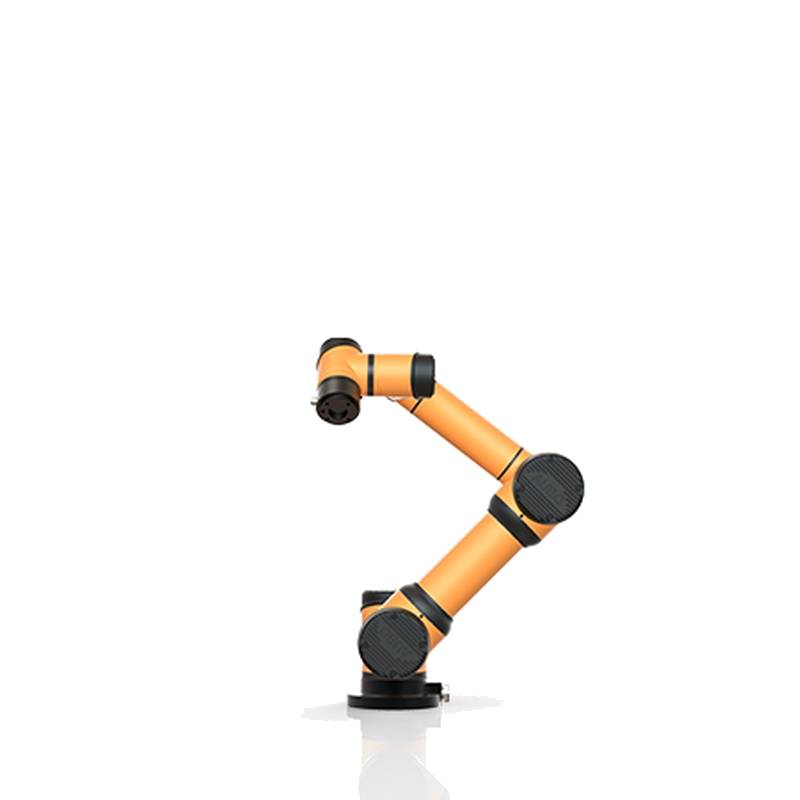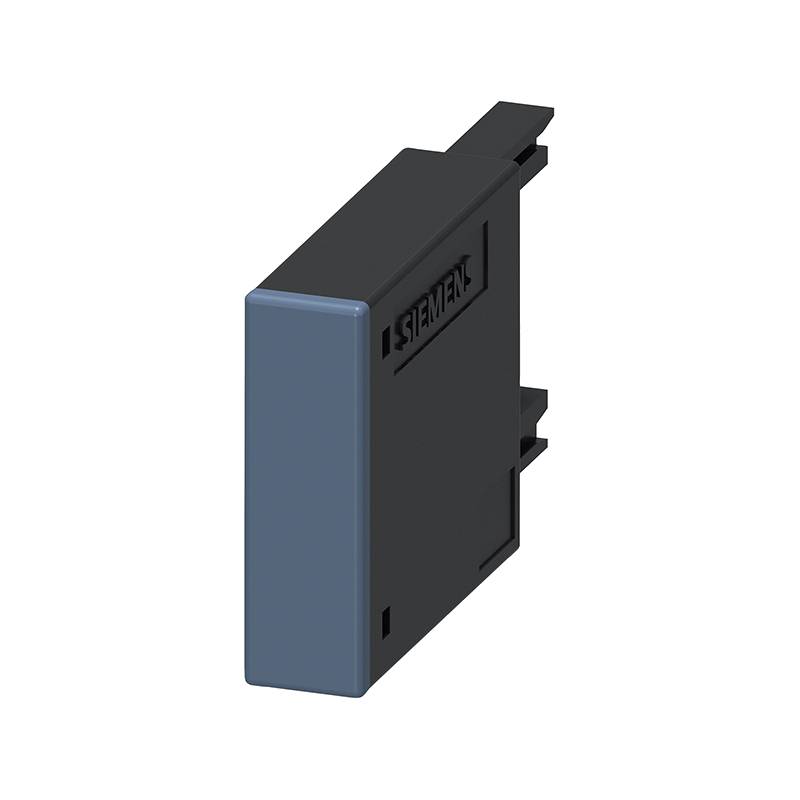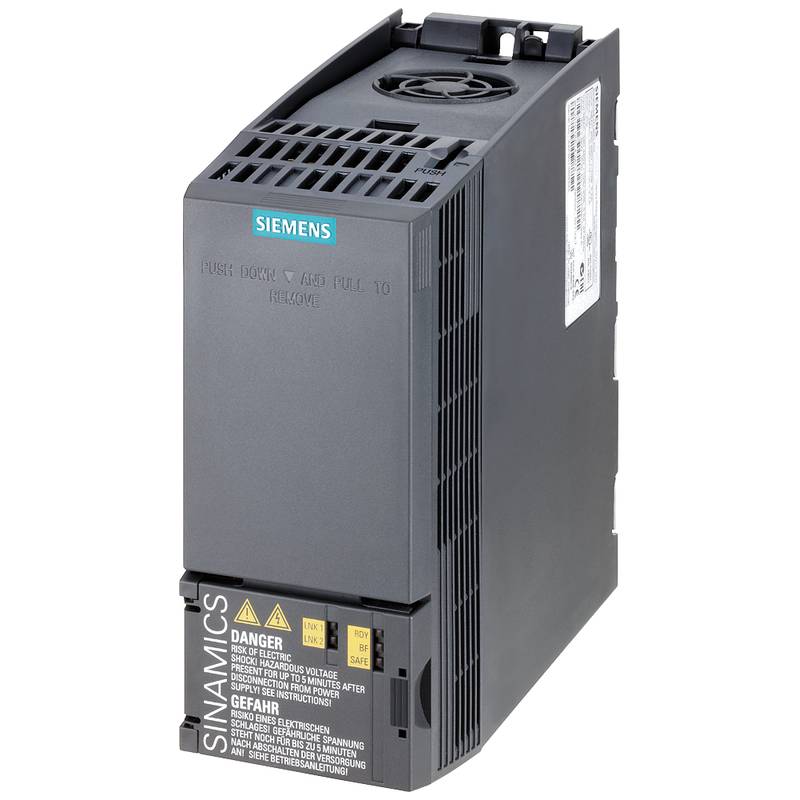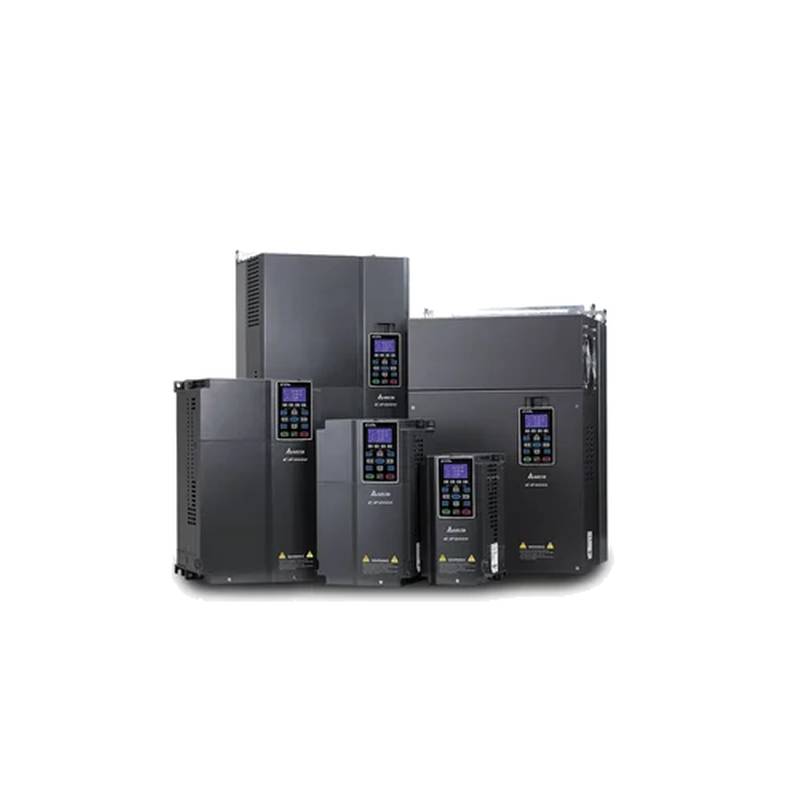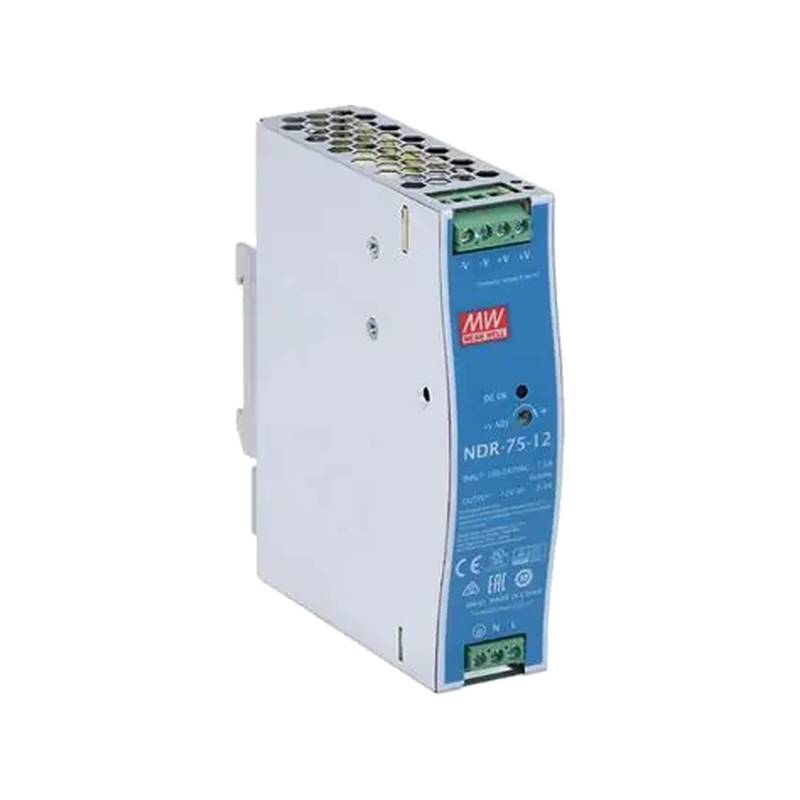
The AUBO-i7 Collaborative Robot, with its specific 786.5mm reach and 7kg payload capacity, emerges as a powerful and versatile solution for modern industrial automation, particularly excelling in palletizing and material handling tasks. This cobot is engineered for seamless human-robot collaboration, offering enhanced safety, flexibility, and ease of use, making it an ideal choice for small to medium-sized enterprises (SMEs) and large-scale operations seeking to optimize their production lines. Its robust design and advanced features ensure efficient operation, reduced cycle times, and improved overall productivity.
AUBO-i7 Collaborative Robot: Product Specifications
| Feature | Specification |
| :---------------- | :------------------------- |
| Model | AUBO-i7 |
| Reach | 786.5 mm |
| Payload | 7 kg |
| Degrees of Freedom | 6 |
| Repeatability | ±0.02 mm |
| Power Supply | AC 220V/50Hz or AC 110V/60Hz |
| Operating Temp. | 0-45°C |
| Protection Class | IP54 |
| Mounting | Floor, Wall, Ceiling |
| Programming | Intuitive GUI, Offline |
Core Features & Market Positioning
The AUBO-i7 differentiates itself through its inherent collaborative capabilities, designed to work safely alongside human operators without extensive guarding in many applications. Its 6-axis design provides exceptional dexterity, allowing for complex movements and optimal path planning, crucial for intricate palletizing routines and dynamic handling operations. The cobot’s straightforward programming interface significantly reduces the complexity and time associated with deployment, lowering the barrier to entry for automation. This positions the AUBO-i7 as a cost-effective and highly adaptable automation solution, capable of handling a wide range of tasks that were previously challenging or uneconomical to automate. Its robust build quality and adherence to safety standards make it a reliable partner in demanding industrial environments.
Key Application Scenarios
The AUBO-i7 Collaborative Robot is ideally suited for a multitude of industrial applications. In palletizing, it can efficiently stack boxes, bags, or other items onto pallets with precision and consistency, reducing manual strain and repetitive motion injuries. For material handling, it excels at pick-and-place operations, transferring components between workstations, machines, or conveyor belts. Its versatility extends to machine tending, where it can load and unload parts from CNC machines or injection molding equipment. Furthermore, it's a strong candidate for assembly tasks, particularly those involving the precise placement of components. These scenarios are often sought after by businesses looking to increase throughput, improve accuracy, and reallocate human resources to higher-value activities.
Practical System Integration Guidance
Integrating the AUBO-i7 into an existing workflow is streamlined due to its user-friendly design. The cobot typically connects to the control system via standard industrial communication protocols such as EtherNet/IP or Profinet, allowing for seamless data exchange with PLCs and other automation equipment. Power connection is a standard AC input, simplifying electrical setup. For initial setup, the intuitive graphical user interface (GUI) allows for direct teaching of robot paths through manual guidance or simulation software. This reduces the need for extensive robotic programming expertise. Wiring for end-effectors and sensors is generally straightforward, often utilizing pre-defined connectors on the robot's wrist, further expediting commissioning.
Operation and Risk Mitigation
Operating the AUBO-i7 prioritizes safety, especially in collaborative environments. Its built-in safety features include force and torque sensing, which enable the robot to detect collisions and stop or alter its movement safely. This significantly minimizes the risk of injury to human workers. Regular maintenance, including checking cable integrity and joint lubrication, is crucial for sustained performance and preventing unexpected faults. While the AUBO-i7 is designed for robust operation, common troubleshooting may involve recalibrating tool center points or checking end-effector functionality. Critical error codes, if encountered, are typically detailed in the operational manual and often relate to communication interruptions, exceeding payload limits, or emergency stops.
Scalability & Long-Term Value
The AUBO-i7 offers significant scalability, allowing businesses to adapt their automation strategy as needs evolve. Its modular design and compatibility with a wide range of grippers, sensors, and vision systems enable it to handle increasingly complex tasks. Integration with Industrial Internet of Things (IIoT) platforms is straightforward, facilitating remote monitoring, diagnostics, and data analytics for predictive maintenance and performance optimization. This enables businesses to build a truly connected and intelligent manufacturing ecosystem, enhancing long-term operational efficiency and return on investment.
Frequently Asked Questions (FAQs)
What is the maximum payload of the AUBO-i7?
The AUBO-i7 Collaborative Robot is designed to handle a maximum payload of 7 kilograms. This capacity makes it suitable for a variety of tasks involving the manipulation of moderate-weight items. It's crucial for users to ensure their end-effector and payload combined do not exceed this limit for safe and efficient operation.
This payload rating allows the cobot to be effective in applications like small parts assembly, pick-and-place, and light palletizing. Exceeding the payload can lead to performance degradation, increased wear, and potential safety hazards. Therefore, careful consideration of the total weight being moved is essential during system design and programming.
The 7kg payload is a key specification that balances the robot's agility and collaborative safety features with its practical utility in industrial settings. It represents a sweet spot for many common automation needs, offering a robust solution without compromising on the inherent safety of collaborative robotics.
What is the reach of the AUBO-i7 collaborative robot?
The AUBO-i7 Collaborative Robot features a maximum reach of 786.5 millimeters. This extended reach allows the robot to access a broader workspace, making it versatile for various applications. It enables the cobot to serve multiple machines or work areas from a single position.
This specific reach dimension is critical for applications like palletizing, where the robot needs to place items across a wider pallet surface. It also facilitates efficient material handling and machine tending by allowing the robot to move items to and from larger or more distant machinery.
Understanding the 786.5mm reach is vital for accurate workspace planning and ensuring the robot can perform its intended tasks without collision or operational limitations. This parameter directly influences the layout of a cell and the robot's accessibility to all required points within its operational envelope.
How is the AUBO-i7 programmed for palletizing tasks?
Programming the AUBO-i7 for palletizing involves defining the pick-up and drop-off points, as well as the stacking pattern. Users can employ intuitive graphical interfaces or direct manual teaching to guide the robot through the desired movements. Offline programming software can also be utilized for more complex sequences and simulations.
The cobot's user-friendly programming environment simplifies the creation of palletizing routines. This includes setting up layer heights, defining spacing between items, and establishing the overall pallet configuration. Safety zones and speed profiles can be adjusted to ensure safe interaction with human operators.
Advanced palletizing strategies can be implemented by integrating vision systems for item identification and orientation. The AUBO-i7's flexibility allows for dynamic adjustments to the stacking pattern based on item variation or pallet dimensions, ensuring efficient and optimized palletization.
Can the AUBO-i7 work safely alongside human operators?
Yes, the AUBO-i7 is specifically designed for safe human-robot collaboration. It incorporates advanced safety features such as force and torque sensing, enabling it to detect collisions and respond immediately by stopping or reducing its speed. This allows it to operate without extensive safety fencing in many scenarios, depending on risk assessment.
The collaborative nature of the AUBO-i7 means it is built to meet stringent international safety standards for robots and machinery. Its speed and force are inherently limited when in collaborative mode, and the robot can be programmed with additional safety zones and monitoring functions to further enhance operator security.
A thorough risk assessment is always recommended to determine the appropriate level of safety measures for any specific application involving human-robot interaction. However, the inherent design of the AUBO-i7 significantly reduces the potential hazards associated with industrial automation, promoting a safer working environment.
What are the main technical specifications for the AUBO-i7?
Key technical specifications for the AUBO-i7 include a 7kg payload capacity and a 786.5mm reach. It operates with 6 degrees of freedom, offering high dexterity and flexibility in its movements. Repeatability is a precise ±0.02mm, ensuring consistent accuracy for demanding tasks.
The robot is powered by standard AC 220V/50Hz or AC 110V/60Hz power supplies, making it compatible with most industrial electrical systems. It operates effectively within a temperature range of 0-45°C and has an IP54 protection class, indicating resistance to dust and water splashes.
Mounting options are versatile, supporting floor, wall, or ceiling installations, which allows for optimal space utilization and integration into various factory layouts. Programming can be achieved through an intuitive GUI or offline simulation tools for efficient deployment.
How easy is it to integrate the AUBO-i7 into an existing production line?
Integrating the AUBO-i7 is designed to be straightforward, minimizing downtime and implementation costs. It typically connects using standard industrial communication protocols like EtherNet/IP or Profinet, ensuring compatibility with existing PLCs and control systems. The robot uses a standard AC power input, simplifying electrical integration.
The intuitive GUI and manual guiding features significantly reduce the complexity of programming and commissioning. This allows for faster deployment, even for facilities with limited in-house robotics expertise. Wiring for end-effectors and sensors is often facilitated by pre-installed connectors on the robot's wrist.
Its versatile mounting options (floor, wall, ceiling) provide flexibility in cell design, enabling seamless integration into various physical layouts. This adaptability ensures that the AUBO-i7 can be strategically positioned to optimize workflow and maximize productivity within an established production line.
What kind of applications is the AUBO-i7 best suited for?
The AUBO-i7 excels in palletizing and material handling due to its reach and payload. It is also highly effective for machine tending, such as loading and unloading CNC machines or injection molding equipment, improving operational efficiency. Additionally, its dexterity makes it suitable for repetitive assembly tasks where precision and consistency are required.
These applications leverage the robot's collaborative safety features, allowing it to work in close proximity to human operators. This is particularly beneficial for SMEs looking to automate tasks that were previously too costly or complex to automate with traditional industrial robots requiring extensive safety guarding.
The versatility in handling, placing, and assembling various items makes the AUBO-i7 a valuable asset for industries ranging from logistics and warehousing to manufacturing and packaging. Its ability to perform these tasks reliably enhances throughput and product quality.
What is the typical installation process for the AUBO-i7?
Installation typically begins with physically mounting the robot to a stable surface—floor, wall, or ceiling—using the designated mounting points. Then, power and communication cables are connected to the robot controller and the facility's network. The end-effector, such as a gripper, is attached to the robot's wrist.
Once physically installed, the commissioning phase begins. This involves initial setup through the robot's control interface, which includes setting up coordinate systems, calibrating the robot's joints, and establishing communication links with other automation components like PLCs. Basic safety parameters are also configured at this stage.
Finally, the robot is programmed for its specific tasks. This can involve a combination of direct manual teaching (hand-guiding the robot to desired positions) and offline programming using simulation software for complex trajectories. Thorough testing and validation are performed to ensure safe and efficient operation before full deployment.
How does the AUBO-i7 handle potential operational risks and safety concerns?
The AUBO-i7 prioritizes safety through multiple integrated features. Its inherent collaborative design includes built-in force and torque sensing that allows it to detect unexpected contact, such as with a human operator, and react by stopping or reducing its motion. This significantly mitigates risks in shared workspaces.
Beyond its inherent safety features, users can implement additional safety measures. This includes defining virtual safety zones within the robot's workspace through its programming interface. The robot's speed can be dynamically adjusted based on the proximity of humans or other potential hazards, ensuring a safe working envelope.
Regular maintenance and adherence to operational guidelines are crucial for mitigating risks. Routine checks of the robot's integrity, proper functioning of safety sensors, and correct programming practices help prevent unexpected behavior and ensure the long-term safe operation of the AUBO-i7 in any industrial environment.
What are the benefits of using the AUBO-i7 for long-term industrial automation goals?
The AUBO-i7 offers significant long-term value through its scalability and adaptability. As production demands change or new tasks emerge, the robot can be easily reprogrammed or integrated with additional peripherals like vision systems or advanced grippers to meet evolving needs. This flexibility avoids the need for frequent, costly hardware replacements.
Furthermore, its compatibility with IIoT platforms allows for seamless integration into smart factory initiatives. This enables advanced data collection, remote monitoring, predictive maintenance, and performance optimization, leading to increased operational efficiency and reduced downtime over the robot's lifespan.
The collaborative nature of the AUBO-i7 also contributes to long-term value by enabling businesses to retain their workforce while automating repetitive or ergonomically challenging tasks. This allows human operators to transition to more skilled roles, fostering a more engaged and productive workforce while maximizing the return on automation investment.














